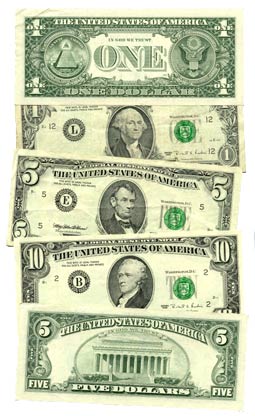Investing in Bonds? Do you know how they work?
Over the past two years we have seen a significant rally in the bond market due to the Federal Reserve’s decision to keep interest rates low. This run up in bond prices raises questions surrounding profit taking and tax management. In this post I will walk you through an example of how bonds work. In next week’s post, we will explore how bonds impact your taxes and what you can do to maximize your profits.
Advanced Yacht Builders
Advanced Yacht Builders needs to borrow money to buy supplies. They would like to borrow $1,000 from you at 5% interest per year for the next 10 years. You decide that this is a good investment and you loan them $1,000 by buying their bonds. You will receive 5%, or $50, each year for the next ten years and at the end of the ten years Advanced Yacht will give you your original $1,000 back.
During this ten-year loan, the price of the bond goes up and down and you are able to sell it to someone else if you’d like. This is how bonds are similar to stocks. They can be bought or sold at any time and are different from U.S. savings bonds or bank CDs that only pay interest and never change in value. The price that you are able to sell the bond to someone else is determined by its yield.
By lending $1,000 dollars at 5% interest, you are receiving a yield of 5%. Calculating the yield of a bond can get a little tricky because there are three main things to consider: bond price, interest and the amount of time the money is borrowed. I will not get into that calculation here, but the most important things to remember are:
- The price of a bond is determined by its yield
- When interest rates go up, the price of a bond goes down
- When interest rates go down, the price of a bond goes up
Scenario 1: Interest Rates Drop
Now lets say you’re a year into lending to Advanced Yacht and all of a sudden interest rates drop and they can borrow money at 1% interest instead of 5% interest. After breaking out a financial calculator, you would find that the price of this bond would go from $1,000 to $1,340 because the yield of this bond went down, causing the price of the bond to go up (When interest rates go down, the price of the bond goes up). You would still receive 5% interest AND have a gain of 34% in the price of the bond.
Scenario 2: Interest Rates Rise
Alternatively, if interest rates rose to 9%, the price of the bond would go from having a price of $1,000 to having a price of $760. Again, as interest rates increase, the price of the bond decreases. You would still receive 5% interest, but if you needed to free up cash, you would have to sell the bond at a -24% loss.
The price of the bond decreases because investors do not want to buy the bond that you’re holding, which is only paying 5% interest, when they can buy a new bond from Advanced Yacht that is paying 9% interest.
Next Steps
The math to calculate the yield isn’t important here. What is important is the fact that in the scenario where interest rates dropped from 5% to 1%, the price of the bond gained 34% and that requires your attention. Your options are to:
- Do nothing and collect your 5% interest, but watch the 34% gain decline over time because at the end of the ten years you will only be paid back the original $1,000 that you lent
- Sell the bond that you purchased for $1,000 to someone else for $1,340 and lock in a 34% gain, but forfeit the future 5% interest payments
In the next post, we will answer the question of how taxes are impacted in either decision and which decision is right for you.







Leave a Reply
Want to join the discussion?Feel free to contribute!